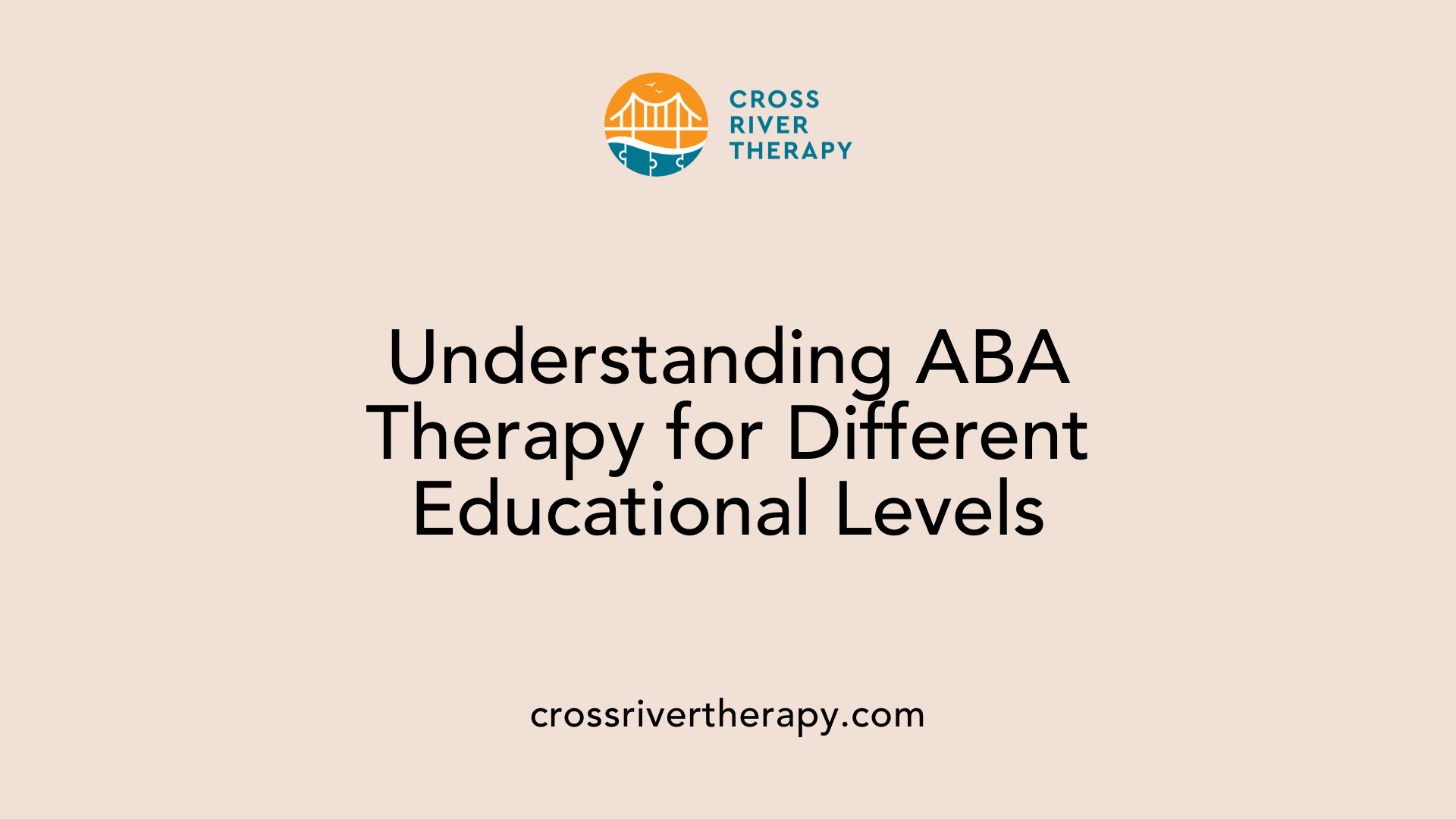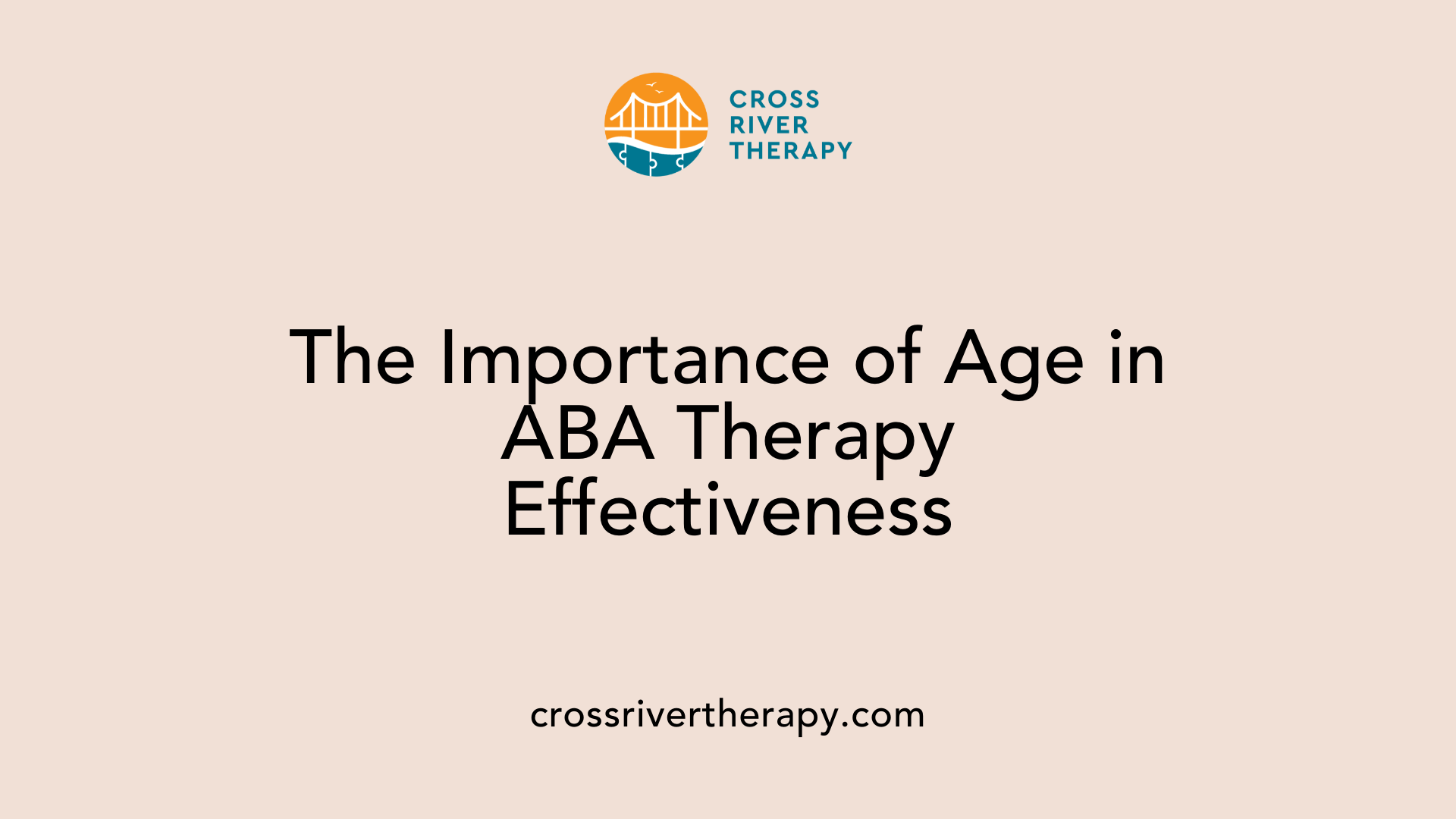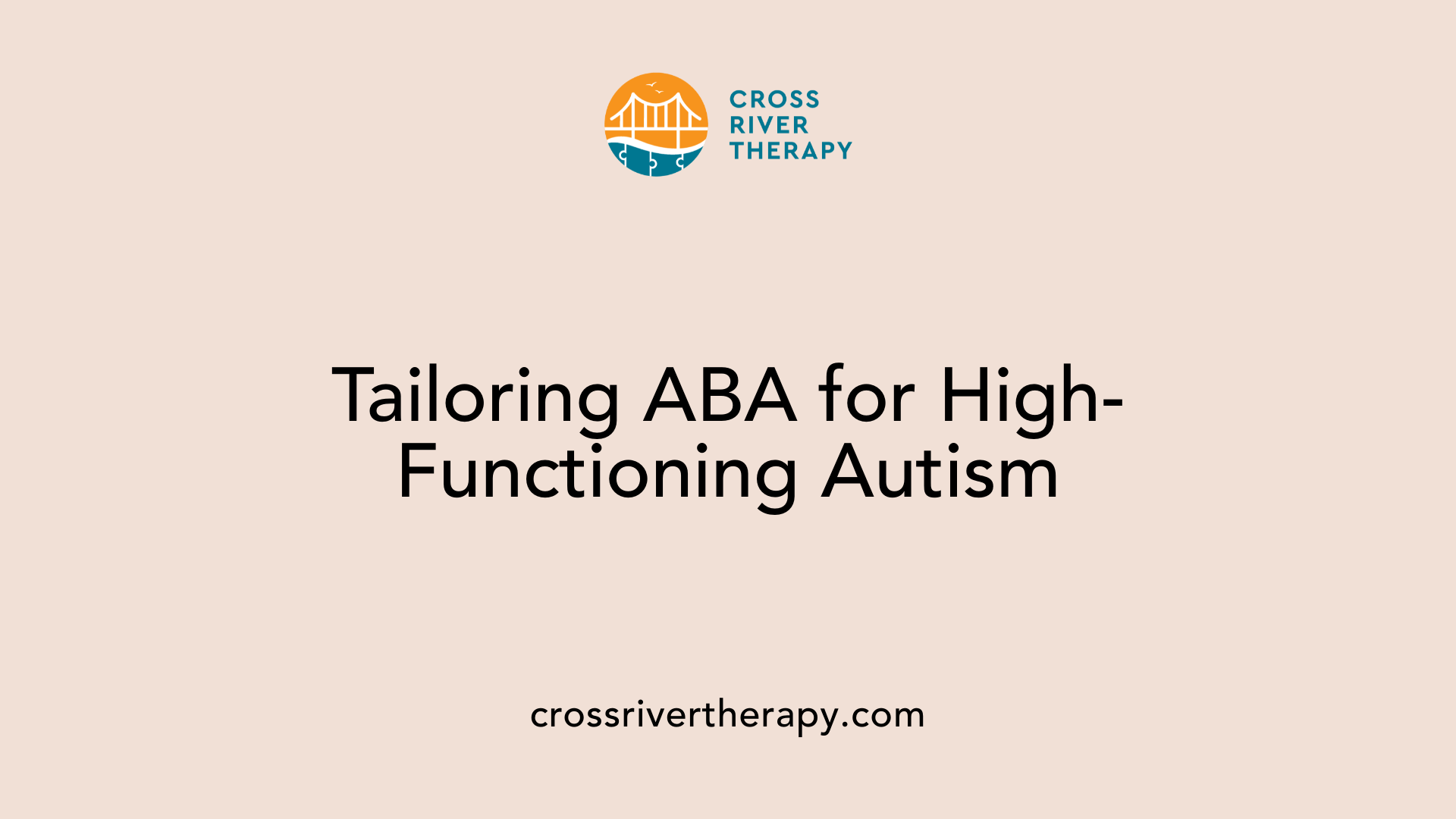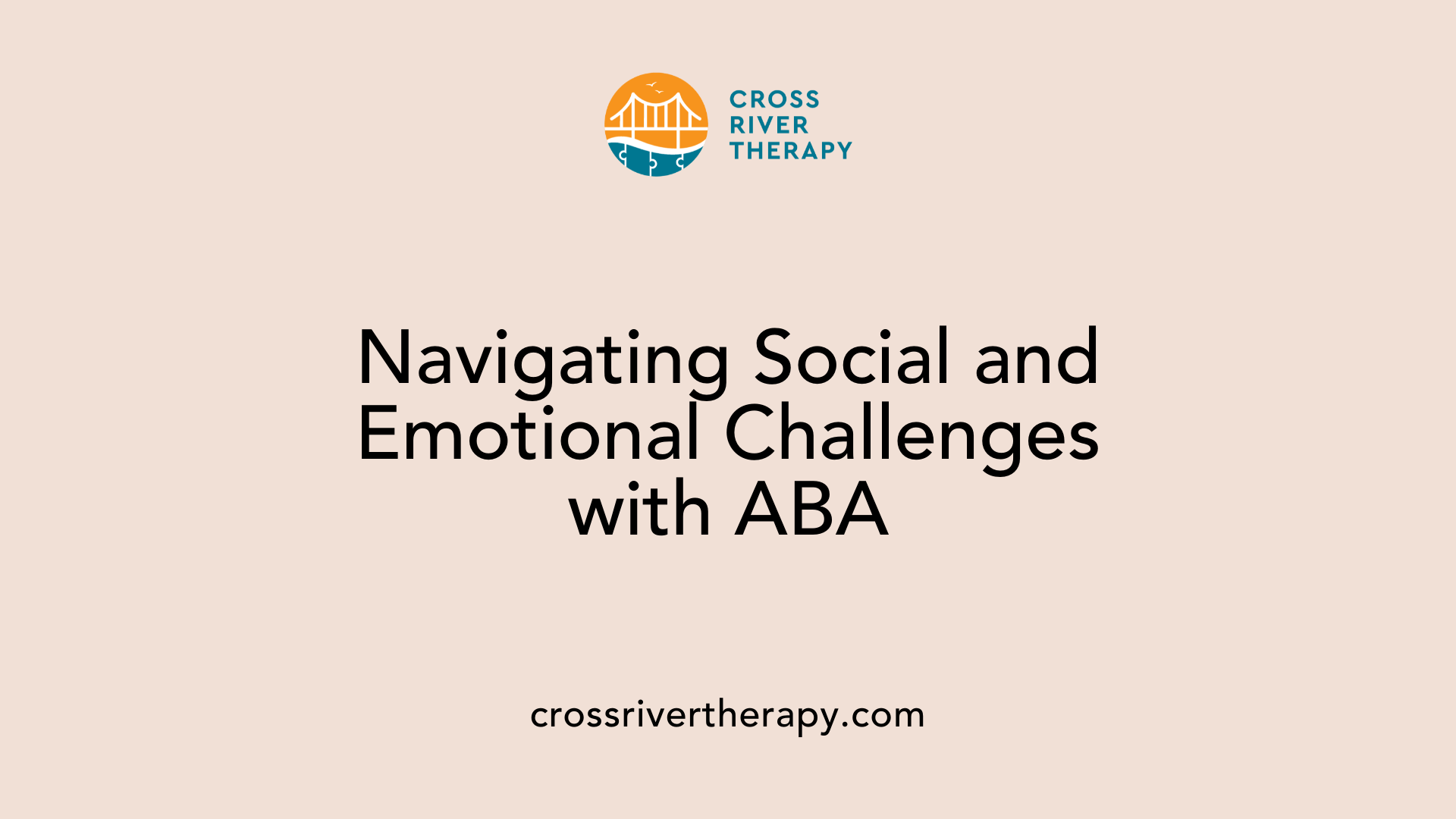Understanding the Role of ABA in Teenage Development
Applied Behavior Analysis (ABA) therapy is gaining recognition for its effectiveness in assisting teenagers with autism. As adolescents navigate complex social, emotional, and developmental challenges, ABA offers structured support tailored to their unique needs. This article explores how ABA therapy adapts to benefit teenagers, focusing on skill acquisition and behavioral improvements crucial for this stage of life.
Adapting ABA Therapy for High School and Middle School Students

What is ABA therapy for high school students with autism and how does it differ from ABA for middle school students?
ABA therapy for high school students with autism is tailored to promote independence, enhance social skills, and build communication abilities in preparation for adulthood. The focus often includes practical skill development, such as job readiness, personal hygiene, and life management tasks, which prepare students for the challenges of adult life.
In contrast, ABA therapy for middle school students usually concentrates on foundational skills necessary for social interactions and basic self-regulation. This stage addresses the specific developmental needs of younger adolescents; hence, the strategies might emphasize improving peer relationships and navigating social scenarios.
Individualized approaches in ABA
Both high school and middle school ABA therapies utilize individualized approaches, recognizing that each student has distinct needs. Therapists craft plans based on personal goals and challenges, ensuring that interventions are relevant and effective.
Skill focus for different educational stages
During middle school, ABA might focus on developing essential communication skills, such as initiating conversations and interpreting social cues. For high school students, the skill set expands to include maintaining relationships, handling criticism, and preparing for independent living. This progression highlights the importance of continuous and adaptable services as students transition through their educational journey.
Ultimately, high-quality ABA services can significantly enhance both academic performance and social engagement at all stages, underscoring the value of ongoing support throughout a student's educational experiences.
Age Considerations in ABA Therapy

Effectiveness of ABA for Different Age Groups
Applied Behavior Analysis (ABA) therapy is effective across a wide age range, from young children to adults. Contrary to popular belief, it is not limited to toddlers. In fact, studies have shown that ABA can significantly support adolescents and even adults with autism spectrum disorder (ASD). While the methods remain grounded in the same principles, the specific goals and techniques utilized will differ depending on the individual's age and developmental needs.
Lack of Strict Age Limit
There is no strict age limit for beginning ABA therapy. It can be initiated at any point in life, including during the teenage years. This flexibility allows teenagers to engage in behavioral interventions that are specially tailored to their unique circumstances and goals. By adjusting the therapy to meet these evolving needs, therapists can foster independence and promote life skills relevant to their age group.
Early Intervention Benefits
Despite its effectiveness at any age, ABA therapy is most impactful when introduced early, especially between the ages of 2 and 6. Early intervention is crucial as it enables significant advancements in critical areas like communication, social skills, and adaptive behavior. Research shows that starting the therapy before age four yields lasting benefits and can influence the individual's development positively for years to come. The Early Start Denver Model exemplifies this, providing opportunities for intervention as early as six months, thereby highlighting ABA's adaptability for children in their formative years.
Comparing ABA and CBT for Autism Care
How does the effectiveness of ABA therapy compare to CBT for individuals with autism?
The effectiveness of Applied Behavior Analysis (ABA) therapy compared to Cognitive Behavioral Therapy (CBT) for individuals with autism varies significantly based on the person's needs and characteristics. ABA specializes in modifying observable behaviors, making it particularly effective for teaching essential skills through positive reinforcement techniques.
Research, including landmark studies by pioneer behavior analyst O. Ivar Lovaas, has shown substantial cognitive improvements in children who undergo extensive ABA therapy. Such achievements are particularly pronounced in younger children and those with more severe symptoms of autism spectrum disorder.
In contrast, CBT tends to provide more benefits for higher-functioning individuals with autism. It often addresses co-occurring issues like anxiety and depression, utilizing cognitive techniques to help individuals navigate their emotional and psychological challenges. Studies indicate that CBT can produce positive outcomes similar to those found in neurotypical populations.
Ultimately, both ABA and CBT are evidence-based therapies that can yield significant improvements, yet their suitability hinges on the individual's age, symptom severity, and specific treatment goals. By combining these approaches where appropriate, clinicians can offer a more comprehensive support strategy tailored to each person's unique needs.
Specific applications and effectiveness
| Therapy |
Focus |
Best Suited For |
Evidence of Effectiveness |
| ABA |
Behavior modification |
Younger children, severe symptoms |
Significant cognitive improvements |
| CBT |
Emotional regulation |
Higher-functioning individuals |
Positive outcomes for anxiety/depression |
Suitability for different autism presentations
While both therapies can be effective, the choice between ABA and CBT often depends on their aligned objectives—ABA centers on observable behavior changes, while CBT emphasizes emotional and cognitive processing skills. Adjusting the treatment based on the individual’s progression and needs can yield the best results in managing autism spectrum disorder.
Goals of ABA Therapy for Older Teenagers
What are the goals of ABA therapy for teenagers, specifically those aged 17, with autism?
The goals of ABA therapy for 17-year-olds with autism spectrum disorder (ASD) are designed to meet their unique challenges and developmental needs. Central to these objectives is improving social skills, which enables teens to initiate conversations, interpret nonverbal cues, and engage in group activities, thereby fostering meaningful relationships.
Another critical focus is enhancing emotional regulation. Teens are often faced with intensified feelings, making it essential to teach coping techniques and stress management strategies. ABA therapy guides adolescents in recognizing triggers that lead to emotional distress and offers constructive alternatives to manage those feelings.
Moreover, fostering independent living skills is paramount. ABA interventions aim to equip teenagers with necessary life skills, such as time management, personal hygiene, and cooking, preparing them for adulthood. This aspect of the therapy fosters a sense of self-reliance, making daily tasks more manageable.
Given the alarming rates of depression among adolescents with autism, ABA therapy also addresses this issue directly. By improving social interactions and promoting engagement in positive activities, the therapy encourages increased self-esteem and combats feelings of isolation. This holistic approach ensures that teenagers can lead more fulfilling, independent lives.
In summary, ABA therapy for older teenagers emphasizes individualized support to help navigate adolescence successfully while tackling the multifaceted challenges they face.
Effectiveness of ABA for High-Functioning Individuals

Does ABA therapy work for individuals with high-functioning autism?
ABA therapy can work effectively for individuals with high-functioning autism, particularly when tailored to their specific needs. Research indicates that initiating ABA therapy before the age of five yields the greatest benefits, though positive outcomes can still be seen for those who start later. This therapy focuses on enhancing language and communication skills, improving social interactions, and decreasing problem behaviors, which are critical for individuals experiencing the subtler symptoms of high-functioning autism.
Tailoring ABA to meet specific needs
The success of ABA for high-functioning individuals lies in the individualization of treatment plans. Therapy sessions can incorporate various strategies aligned with a teenager's unique requirements. Areas such as social skills, adaptive behaviors, and emotional regulation can be specifically targeted, utilizing techniques like positive reinforcement and discrete trial training, which are foundational to ABA practices.
Role of BCBA in ABA programs
A Board Certified Behavior Analyst (BCBA) plays a crucial role in designing and implementing personalized programs. The BCBA assesses the individual's specific challenges and strengths, ensuring that the therapy is both effective and ethically sound. By regularly reviewing progress and making necessary adjustments, a BCBA helps maximize the benefits of ABA therapy, leading to significant improvements in overall functioning for adolescents with high-functioning autism.
| Effectiveness Factors |
Details |
Importance |
| Individualization |
Customizing therapy plans based on specific needs |
Enhances effectiveness |
| Early Initiation |
Best outcomes when started before age five |
Long-term benefits |
| BCBA Involvement |
Expert analysis and ongoing adjustments to therapy |
Ensures proper implementation |
The Comprehensive Approach of ABA for Teens

Core principles of ABA
Applied Behavior Analysis (ABA) centers on the science of learning and behavior. Its fundamental principle is positive reinforcement, which increases the likelihood of desirable behaviors by rewarding them. This approach supports teenagers with autism in developing essential life skills, enhancing their social interactions, and improving emotional regulation.
Individualized and flexible intervention
ABA therapy is tailored to meet the unique needs of each adolescent. This individualized approach includes a variety of techniques, such as Discrete Trial Training (DTT) and Social Skills Training, to target specific goals related to communication, social skills, and independence. Therapists assess each teenager’s particular challenges and strengths, ensuring that therapy plans are adjusted regularly to reflect their evolving needs.
Integration into daily settings
ABA therapy is designed to extend beyond traditional settings, integrating into daily routines at home, school, and community environments. This flexibility helps adolescents generalize skills learned during therapy, making them more applicable to real-life situations. By embedding ABA strategies into everyday activities, teens can more effectively navigate social challenges, enhancing their ability to form meaningful relationships and promoting overall independence.
Common Challenges for Teens with Autism and ABA Solutions

Addressing Social, Emotional, and Communication Challenges
Teenagers with autism often face significant difficulties in social interactions, emotional regulation, and communication. They may struggle to interpret social cues, initiate conversations, and maintain friendships. ABA therapy is effective in addressing these issues by teaching social skills, communication strategies, and emotional regulation techniques that are critical for navigating the complexities of adolescence.
Importance of Tailored Strategies
A critical aspect of ABA therapy is its individualized approach. Treatment plans are customized to meet each teen's specific needs, ensuring that the challenges they face are addressed effectively. Programs can focus on enhancing social skills—like active listening and responding appropriately—which empower teenagers to build meaningful relationships while communicating more effectively.
Supporting Independence and Transition Planning
Independence is a key focus of ABA therapy for adolescents. Strategies are employed to teach vital life skills, such as managing personal hygiene and understanding time management. Transition planning is also integrated, preparing teens for adulthood by exploring career interests and setting achievable goals, ultimately fostering self-determination in their future endeavors.
The Broader Impact of ABA on Teen Development
Long-term benefits of ABA
Applied Behavior Analysis (ABA) therapy promotes essential skill development that benefits teenagers well into adulthood. By enhancing communication, social skills, and independent living abilities, adolescents become more adept at managing life challenges. With targeted strategies, teens learn to navigate daily tasks, contributing to greater confidence and self-sufficiency.
Support for academic and professional growth
ABA therapy equips teenagers with crucial skills for academic success and future employment. The techniques used in ABA can improve focus, enhance learning strategies, and boost memory retention. This foundation is especially important as teenagers transition to adulthood, where they must often integrate into professional environments.
Importance of family and educational involvement
The involvement of family members and educators is vital to the success of ABA therapy. Family support during therapy reinforces the skills learned and facilitates their transfer to home routines. Additionally, schools can implement ABA strategies, creating an inclusive environment that fosters positive social interactions and academic achievement. Comprehensive support maximizes the benefits of ABA, tailoring interventions for each teen’s unique needs.
Empowering Teens Through Tailored ABA Strategies
ABA therapy provides holistic support for teenagers with autism, addressing individual behavioral, social, and developmental needs. By focusing on personalized goals and integrating skills into everyday life, ABA empowers these adolescents to reach their full potential. The collaboration between therapists, families, and educators is crucial to ensuring successful outcomes, enabling teens to navigate the complexities of adulthood with confidence and independence.
References